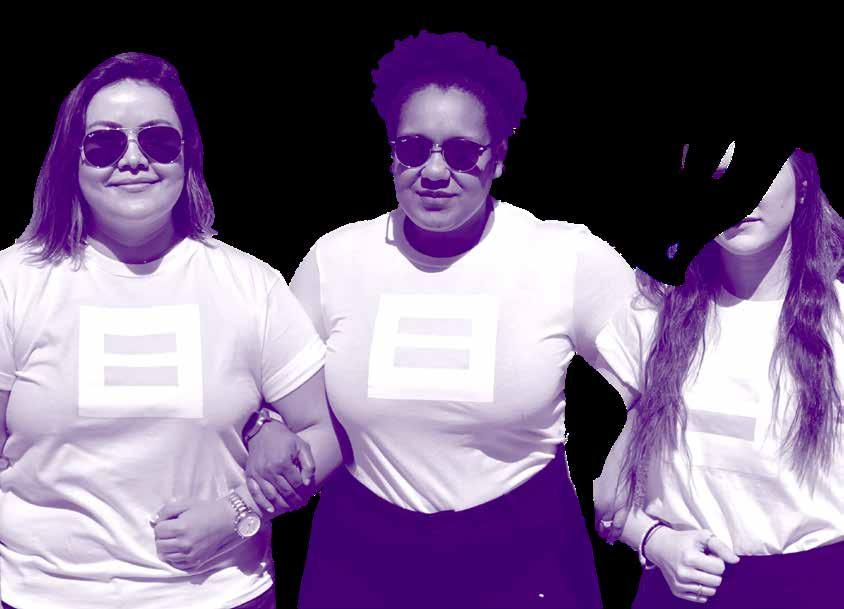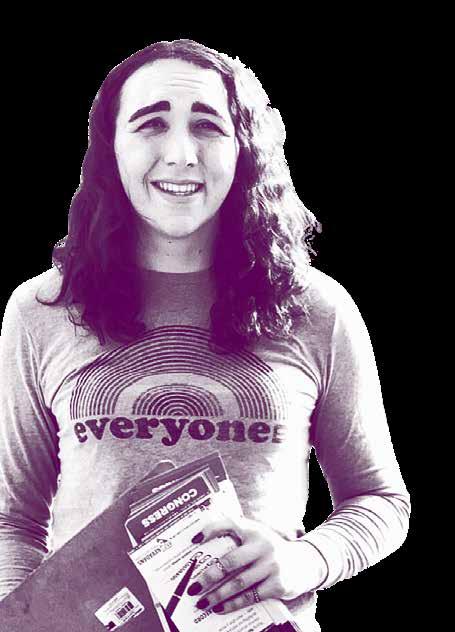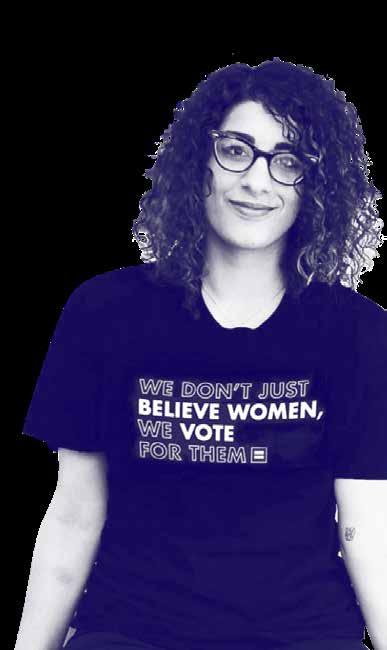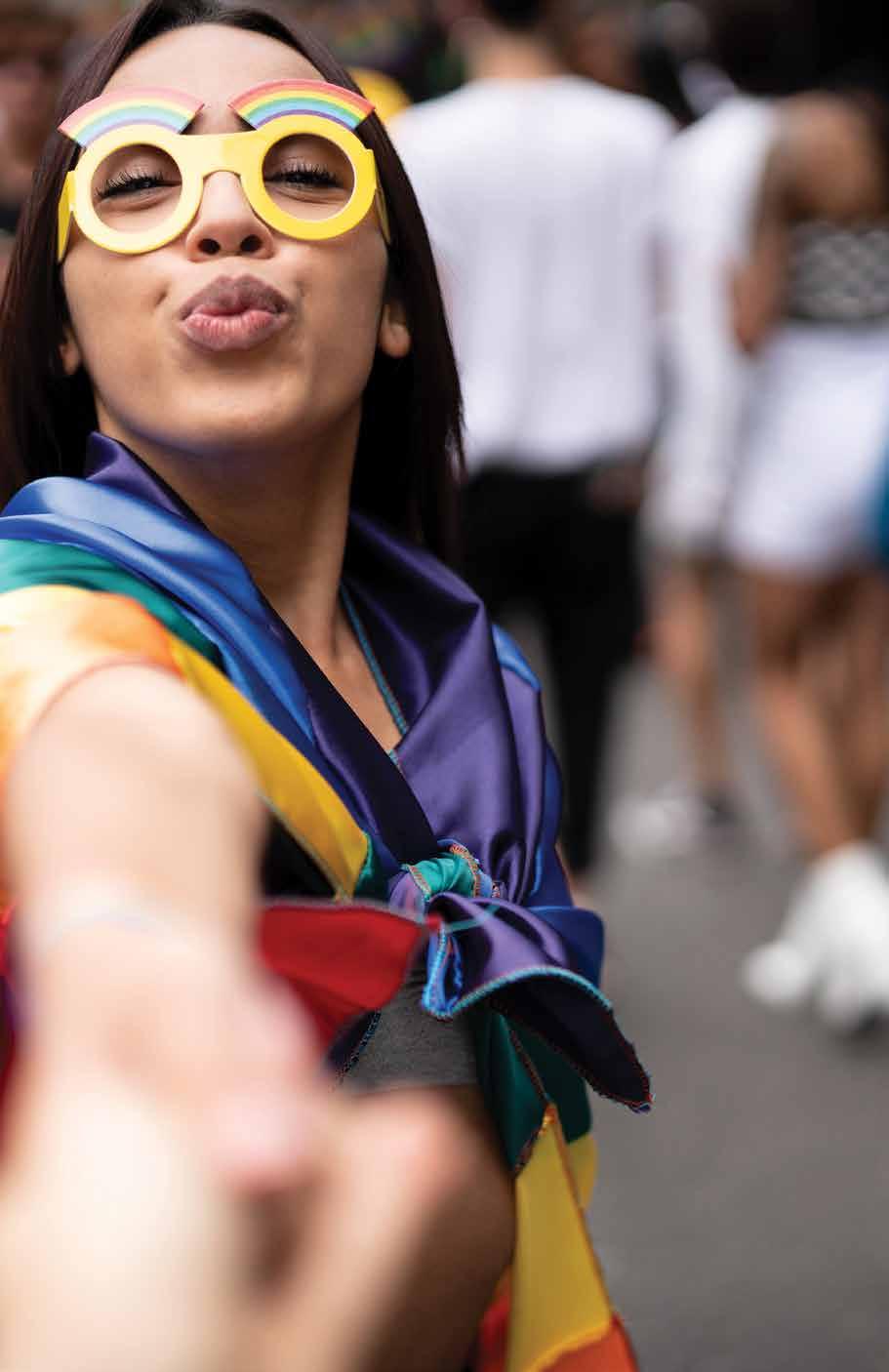
5 minute read
POWER OF WOMEN’S VOTE 100 Years After Women Gained the Right to Vote, We Reflect on How Far We’ve Come and How Far We Still Need To Go
100 YEARS OF REVOLUTIONARY SUFFRAGE Today, HRC Is Working With Partner Groups to Ensure Full Equality at the Ballot Box
Acentury ago, the United States ratified the 19th Amendment, which granted women the right to vote. Now, 100 years later, womenidentified leaders like Dr. Megan Gall, Sherrilyn Ifill, Kristen Clarke and Stacey Abrams are carrying forward the legacy of early suffrage leaders by fighting to ensure that all of our votes are counted and that all people have access to the ballot box — including LGBTQ people. When Dr. Gall graduated from her Ph.D. program and was looking to start her career, she knew she wanted to take her skills and put them toward helping all kinds of marginalized people. So she started working in voting rights, assisting the Lawyers’ Committee on Civil Rights Under the Law on voting litigation. By Matilda Young
For Gall, voting rights work is very much intersectional, particularly in terms of LGBTQ equality. “One of the things that has always struck me about the queer community is that as a group of minorities, we’re the only group of minorities where members of our community belong to every other community on earth. Because of that intersectionality, when we are doing voting rights for other large marginalized communities, [LGBTQ people] are swept into what we’re doing because we are in all other groups.”
Gall began her work in this field right after the Supreme Court’s ruling in Shelby County vs. Holder, which invalidated a key provision of the Voting Rights Act of 1965 — an enforcement mechanism to prevent states with a history of voting discrimination from making changes to voting laws and practices without pre-submitting those changes for review by federal officials. “When we lost that protection, it meant that jurisdictions didn’t have to out themselves as making changes to election plans,” Gall said.
As a result, “states just started making all kinds of changes,” she said. Many of these changes are, in effect, modern-day voter suppression, with the rights of marginalized communities being targeted.
One example Gall gave is voter ID laws.
“Voter ID can act as a modern-day poll tax. If you are low income, and you don’t have the resources to conjure that continued on p. 15


Can inclusive leadership drive market leadership? Different perspectives belong in the workplace. A culture of inclusion fuels innovation, fosters collaboration and drives positive business results.
Proud to achieve a 100% on the HRC Corporate Equality Index each year since 2005.
© 2019 EYGM Limited. All Rights Reserved. EYG no. 002083-19Gbl. ED None US SCORE no. 06668-191US_2


#ProudToBelong #BetterWorkingWorld
— DR. MEGAN GALL, VOTING RIGHTS ADVOCATE
WOMEN VOTING cont’d from p. 13
ID, you are disenfranchised because of your socio-economic status.”
Voter ID laws can disproportionately impact transgender people, many of whom do not have forms of ID that reflect their true gender identity, either because they are in the process of changing their documents or face financial or legal barriers to doing so.
In addition, many LGBTQ people face compounded discrimination based on other characteristics, including race, age, disability and economic status. But as as Gall explained, voter suppression can take on many different forms and can show up anywhere from registration rejection to the counting of provisional ballots to misinformation on social media.
According to Gall, specific, localized incidents of voter suppression can “can get lost really easily, but if we capture all those voters, there’s big numbers of folks being lost.”
Gall, the data director at All Voting is Local, is working to stop these votes from being lost. All Voting is Local is a collaborative campaign housed at the Leadership Conference Education Fund in conjunction with the ACLU, American Constitution Society, Campaign Legal Center and the Lawyers' Committee for Civil Rights Under Law.
Gall said, “We came onto the scene so we could fight disenfranchisement before the last resort — litigation. We have a lot of litigation partners and it’s great work, but if it’s gotten to litigation, that means the damage is done.” Working with local networks of advocates in key states, this coalition engages in a variety of interventions to defend the right to vote before it gets to the courts. Their diverse set of initiatives include voter education and recruiting poll workers that better represent the people voting at these locations.
As Gall explained, All Voting is Local is “uses data to understand what’s happening on the ground so that we can make executive policy choices and strategic decisions.” Her role as data director means wearing many hats, but one of the major components is giving “her team the quantitative evidence they need to do their work.”
For Gall, looking at the history of voting rights, the 19th Amendment was critical for enfranchisement as well as critically incomplete. “It was critical in that it enfranchised 26 million women before the 1920 election. And it was the result of decades and decades of work.” “But women of color were really left behind by that scenario. The majority of Black women, even after the amendment passed, couldn’t vote because of state issues, particularly in the South. Women of color were particularly susceptible to intimidation, violence and poll taxes in a way that white women were not. Native American women had to fight for citizenship and then for the right to vote.”
“It wasn’t until the 1964 Voting Rights Act that we as a nation really did the hard work of fixing the things that were left out of the 19th Amendment. And it certainly wasn’t a total fix,” Gall said. Groups like All Voting is Local and Abrams’ Fair Fight 2020 are hard at work to fix these ongoing issues of disenfranchisement and discrimination. Under the leadership of President Alphonso David, HRC is partnering with Fair Fight 2020 to bring together the organizations’ expertise in voter protection and voter mobilization to ensure fair and open elections in 2020 and beyond.
Thanks to advocates like Gall, Abrams, and civil rights leaders across movements, 100 years after the 19th Amendment, our journey towards full equality at the ballot box marches onward.

Be bold. Together.
Inclusion can give us the courage to try new things, speak openly, and embrace bold thinking. It can bring people together in ways that help organizations







